He was a tribal from MP; he resembled a Pahadi; he was dark with sculpted body; his 10 heads were only a reflection in beaded necklace...and a hundred other visual perceptions and proof make it impossible to box shape-shifter Raavan
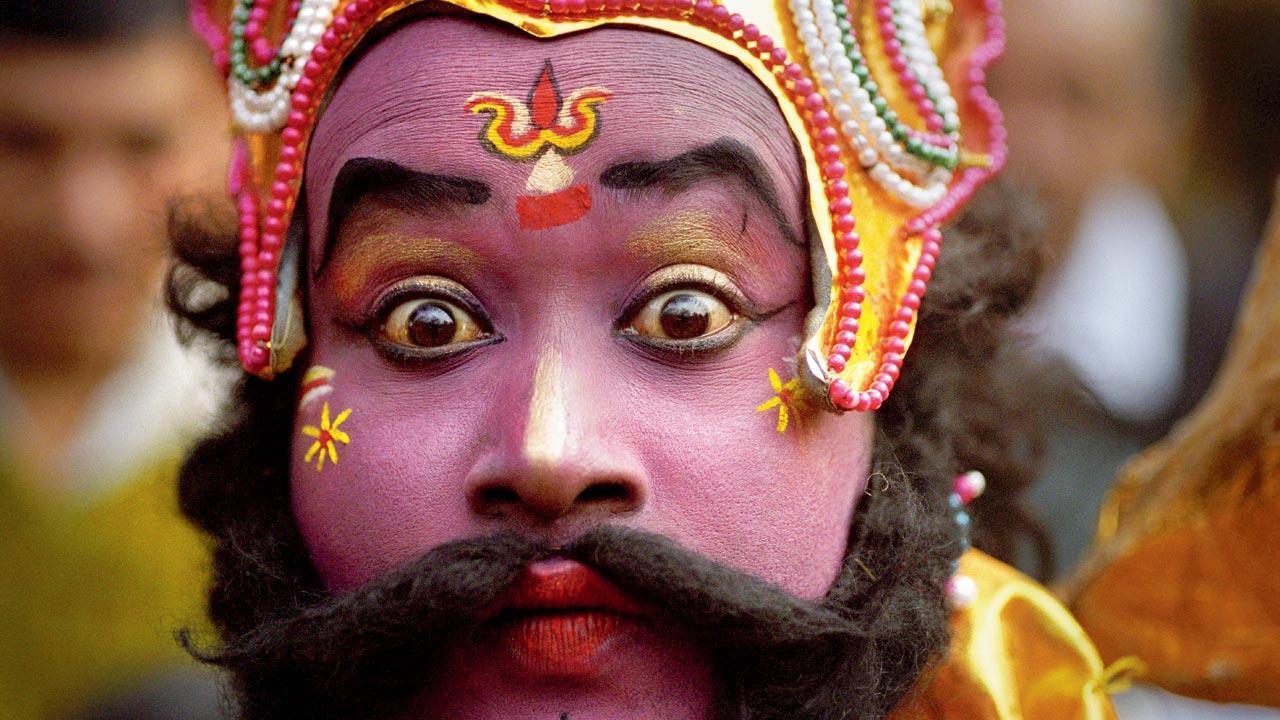
A performing artist plays Raavan at a Ramleela In Delhi. Pic/Getty Images
Saif Ali Khan is not Arvind Trivedi. And this is not 1987. Agarbatti is no longer used to create a fog scene. And cotton needn’t be pasted on glass to create a night sky with clouds. Why then does an audience expect artistic minds to envision a character just the way it was in the pre-satellite television era?
ADVERTISEMENT
Last week, a film received a volley of hate even before it dropped in theatres. A teaser of Om Raut’s mythological drama Adipurush, starring Prabhas as Lord Rama, Kriti Sanon as Sita and Saif Ali Khan as Raavan, was thrashed online for depicting the Lanka raja in garb that critics say doesn’t do justice to the “Brahmin”. He rides a dragon, not the Pushpak Viman; his hair is cropped short; he sports a beard, and the tripun or Shaivite tilak and janeyu or sacred thread is missing.
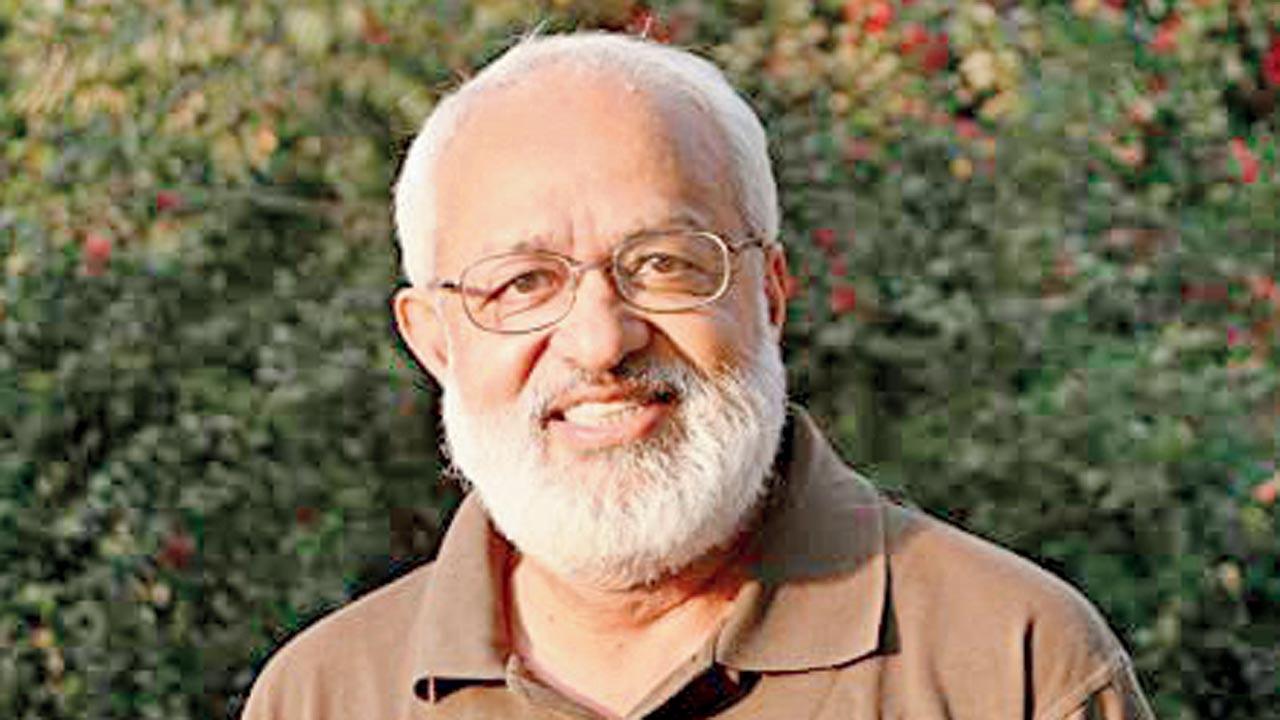
Bharatiya Janata Party (BJP) spokesperson Malavika Avinash, who tweeted that Khan’s character looked like a “Turkish tyrant”, had reportedly said, “The Raavan in the photograph that I see floating around is a guy who looks nothing Indian, who has blue eye makeup and is wearing leather jackets.” Actor Puneet Issar, who played Duryodhana in BR Chopra’s 1988 tele series Mahabharata, agreed, “That’s why the anger that people have is not wrong.” The Vishva Hindu Parishad has said it “ridiculed Hindu society”. On Thursday, the priest of the Ram Temple in Ayodhya called for an immediate ban on the movie that’s slated for a January 2023 release. He critiqued the portrayal of Hanuman “with beard and no moustache”. “It depicts our deities in completely different form against what we have read and known so far,” Das said.
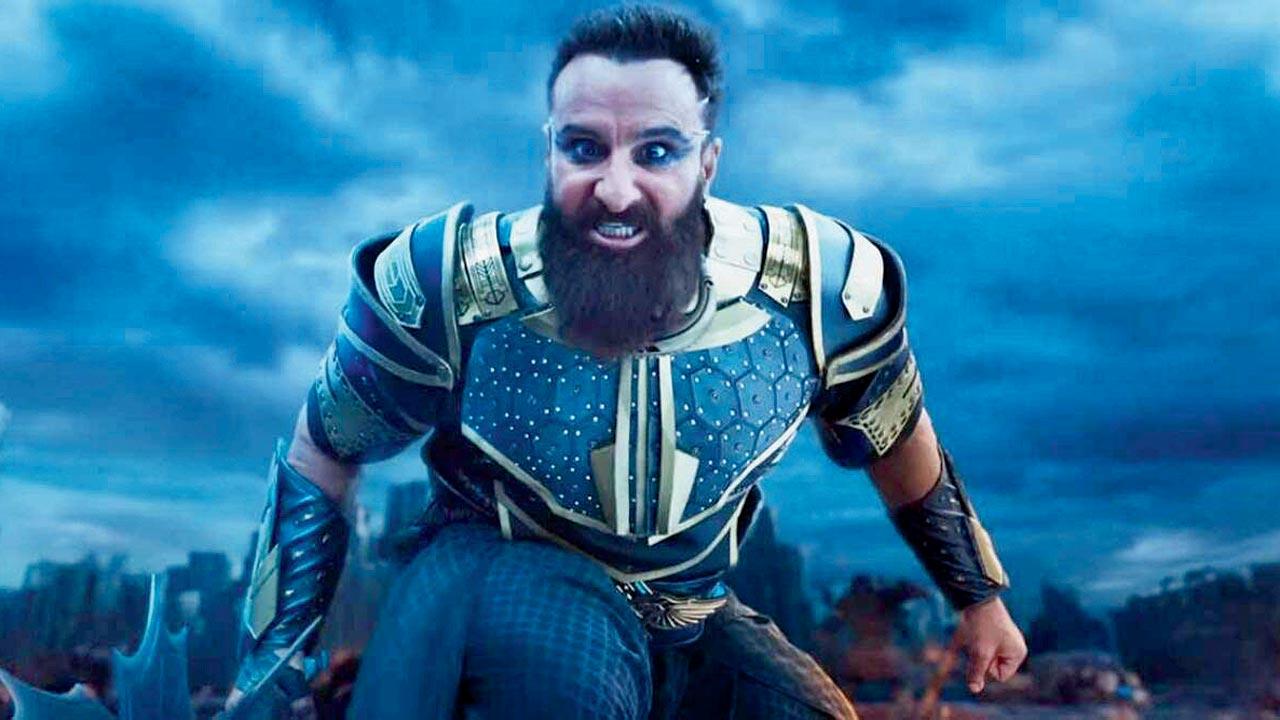 Adipurush, a mythological film in which Prabhas plays Lord Rama and Kriti Sanon, Sita, is also the director of National Award-winning film, Tanhaji. Dissenters have raised objections about Saif Ali Khan’s character looking “less like Ravana, and more like Alauddin Khilji”
Adipurush, a mythological film in which Prabhas plays Lord Rama and Kriti Sanon, Sita, is also the director of National Award-winning film, Tanhaji. Dissenters have raised objections about Saif Ali Khan’s character looking “less like Ravana, and more like Alauddin Khilji”
While the most accepted, well-known version of the epic poem in India is the Shrimad Valmiki Ramayana which through shlokas in Sanskrit tells the story of virtuous Ayodhya king Rama, academicians believe that there could be scores of versions, across languages and cultures, including its retellings like Tulsidas’s Ram Charit Manas, and Ramavataram or Kamba Ramayanam, the Tamil epic written by the poet Kambar during the 12th century. But, Thailand (Ramakien), Burma (Hikayat Seri Ram), Laos (Phra Lak Phra Ram), Nepal (Sidhi Ramayan), Malaysia (Hikayat Seri Ram) and Cambodia (Raemker), among other Asian countries, have their own versions.
Can there ever be one homogenous visual interpretation of Raavan?
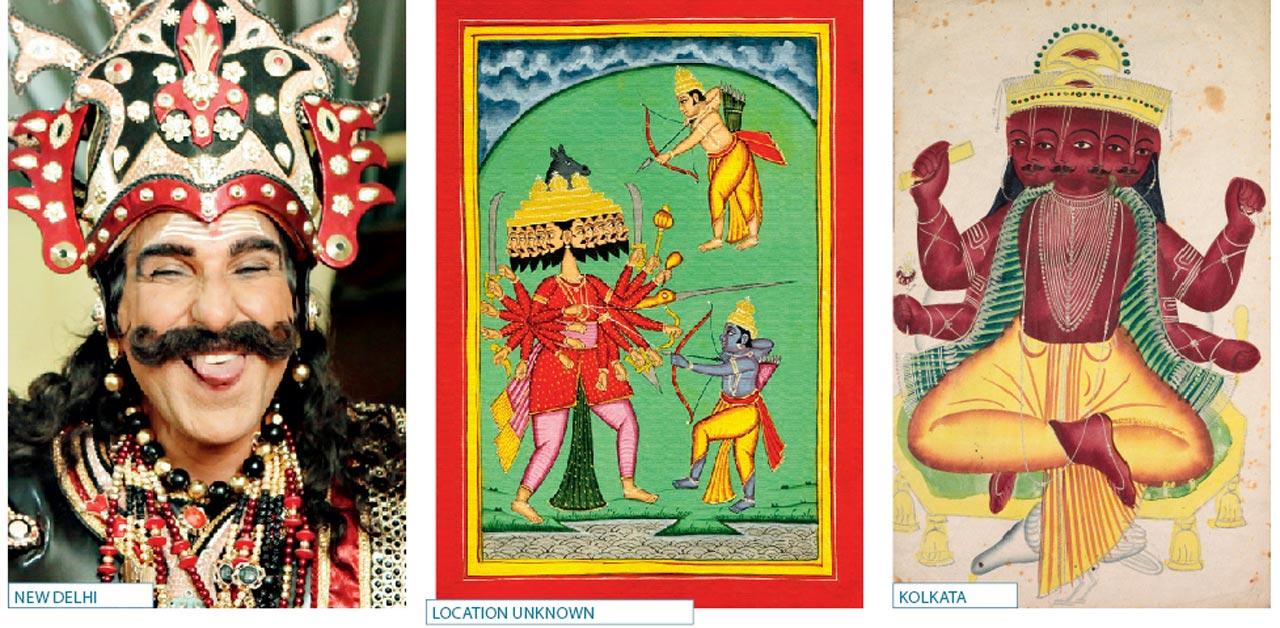 New Delhi: Bollywood actor Mukesh Rishi plays Raavan at Luv Kush Ramleela. All Pics/Getty Images; Location Unknown: Ram and Lakshman fighting Raavan in a painting by an unknown artist; Kolkata: Raavan depicted in a Kalighat painting from 19th century in black ink, colour and silver paint
New Delhi: Bollywood actor Mukesh Rishi plays Raavan at Luv Kush Ramleela. All Pics/Getty Images; Location Unknown: Ram and Lakshman fighting Raavan in a painting by an unknown artist; Kolkata: Raavan depicted in a Kalighat painting from 19th century in black ink, colour and silver paint
‘Even Hanuman was impressed with Raavan’s look’
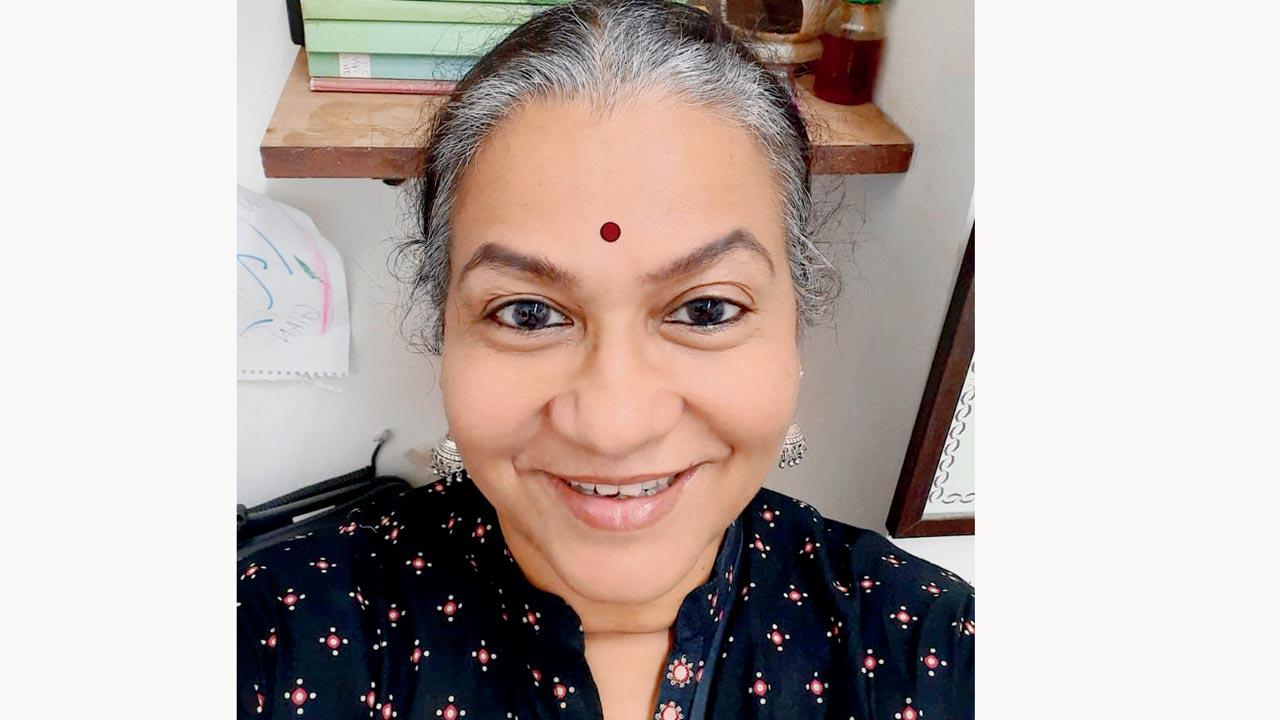
Vidya Vencatesan
Head, Department of French, University of Mumbai; holder of PhD on comparative study of Valmiki’s Ramayana and French epic, le Cycle de Guillaume d’Orange at the University of Sorbonne, Paris
Raavan was supposed to have come from a place south of Ayodhya. He had 10 heads, was an accomplished musician, was an expert on the Vedas and was a lover of beauty. He was learned, had an opulent palace, and a harem full of beautiful women. We get a sense of his appearance when in the segment where he pines for Sita, one of his wives, Dhanyamala, appears before him and says, ‘When you have me, why are you after this dried up woman?’. This is the only time she is mentioned in the work [Valmiki’s Ramayana], but it establishes that he is good looking and desired. In fact, when Hanuman first sees Raavan, he speaks of his looks and valour, and says, “Only if he had dharma on his side”. The epics are unique in the fact that they depict even the flawed as larger than life—there is nothing lowly about the enemy, or else what have you won over? But yes, Raavan was a Brahmin, and is hence usually shown wearing the janeyu. It is believed that one of Rama’s three big sins— along with killing Bali from behind a tree and sending Sita for the agni pariksha—was that he killed a Brahmin.
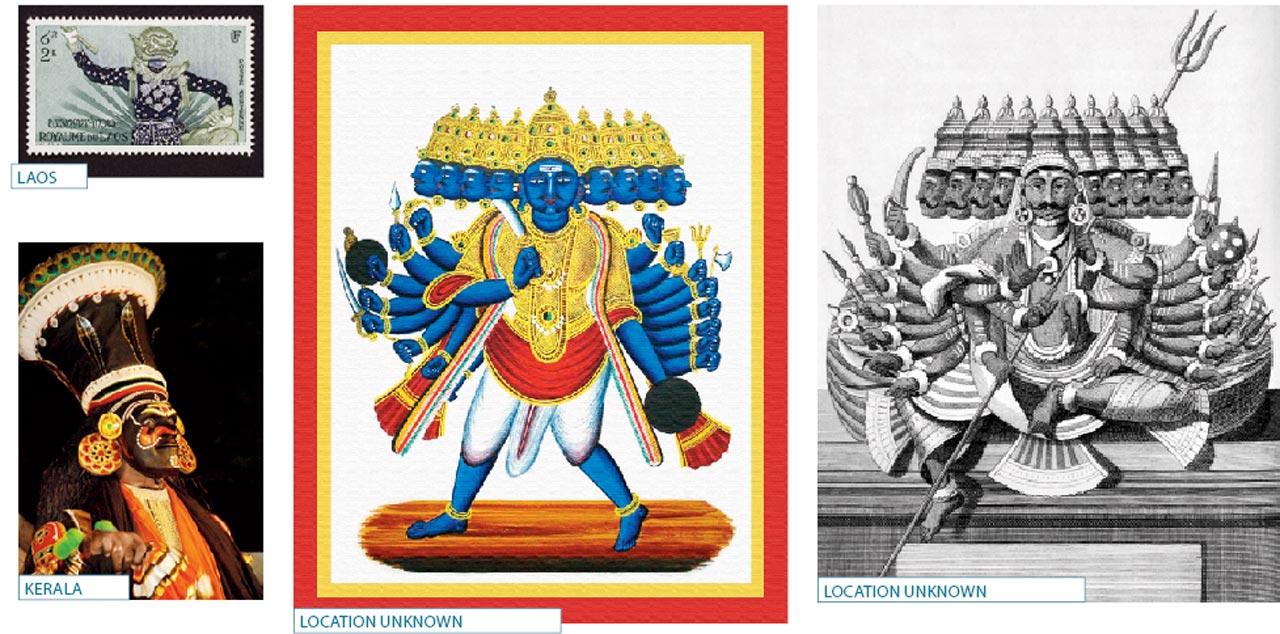 Laos: A postage stamp depicting Raavan, King of the Red Demons, 1955; Kerala: A dancer plays the role of Raavan during a performance of classical dance drama Koodiyattam; Location Unknown: Nine-headed and 18-armed Raavan in Pratyalidha. Artist unknown, 1830; Location Unknown: Raavan, half Brahmin-half demon ruler of Lanka depicted by Pierre Sonnerat (1748-1814), a French naturalist and explorer who made several voyages to Southeast Asia and published a two-volume account
Laos: A postage stamp depicting Raavan, King of the Red Demons, 1955; Kerala: A dancer plays the role of Raavan during a performance of classical dance drama Koodiyattam; Location Unknown: Nine-headed and 18-armed Raavan in Pratyalidha. Artist unknown, 1830; Location Unknown: Raavan, half Brahmin-half demon ruler of Lanka depicted by Pierre Sonnerat (1748-1814), a French naturalist and explorer who made several voyages to Southeast Asia and published a two-volume account
‘Raavan did not have 10 heads in Jain Ramayana’
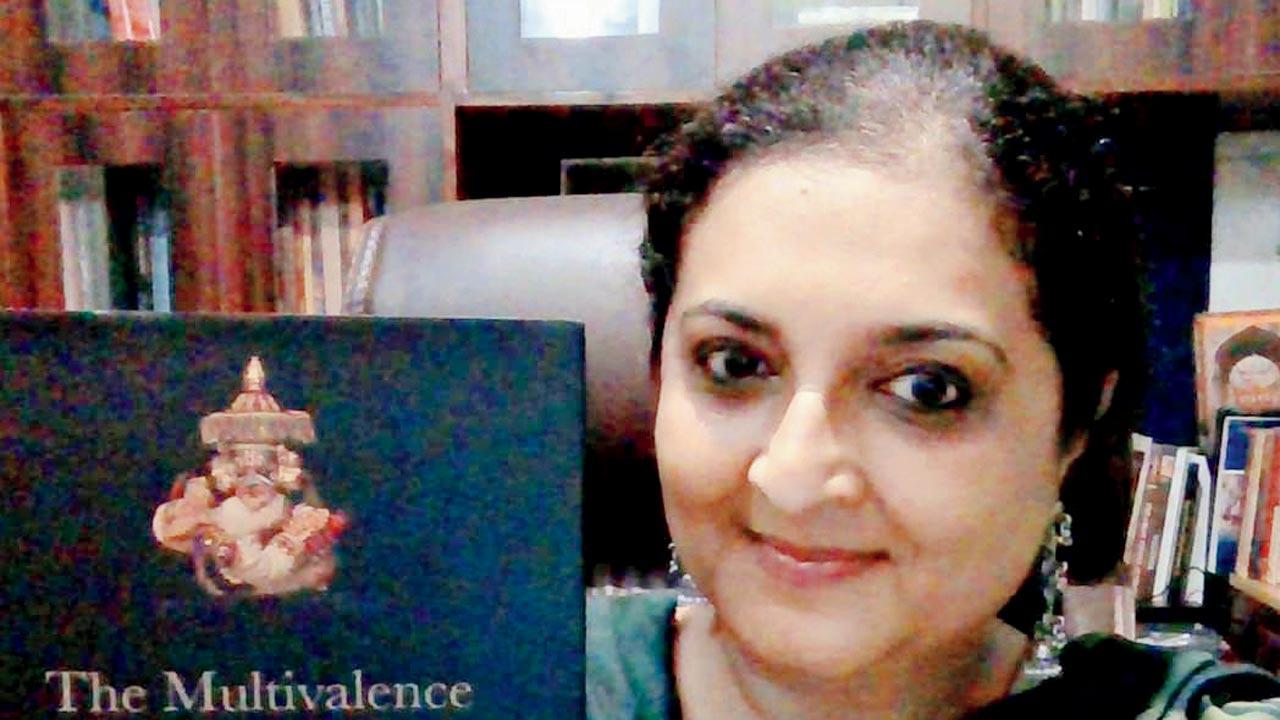
Parul Pandya Dhar
Professor of Art History, Department of History, University of Delhi; Editor of The Multivalence of an Epic: Retelling the Ramayana in South India and Southeast Asia (Manipal Universal Press, 2021)
There are many [versions] of the Ramayana and, consequently, as many visualisations of Raavan, across the centuries, within India and beyond, especially in Southeast Asia. There cannot be any fixed image of Raavan in an inclusive, pluralistic tradition like India. For example, in the Jain Ramayana, beginning with the Paumacariya, Raavan is believed to be a just king and protector of Jain shrines. Here, his 10 heads are actually just one, with the other nine being reflections of his head in a beaded necklace made of nine gems. There are also many Islamic Ramayana versions, like the Mappila Ramayanam [centred in the folk song traditions of the Malabar Muslims], Hikayat Seri Rama [Malay version] and Hikayat Maharaja Wana [Maya version]. The sacred thread or janeyu is worn by Raavan as depicted in some ancient sculptures; this is symbolic of his part-Brahmin lineage. But this doesn’t hold true for many other ancient and medieval Indian and Southeast Asian sculptures and paintings. The mukut or crown is more commonly used when depicting Raavan. In fact, he is almost represented as a mighty king.
‘Raavan was a righteous tribal with 20 hands’

Gondraja Birshah Atram
Holder of a PhD in ancient history; hails from the royal lineage of Gonds, Chandrapur district of Maharashtra
As members of the Gond tribal community, who are the mool-niwasis [indigenous inhabitants] of India, we pay reverence to all our dead ancestors, including Raavan, but not as God. Raavan’s mother is mentioned as a tribal in Hindu scriptures but there is no evidence that she was a Gondi. Some tribals therefore feel an attachment to her and Raavan. After centuries of subjugation at the hands of Aryan invaders who oppressed India’s natives, when members of the Gondi community began to get educated, they found Raavan to be a learned, good man, who fought to reinstate his sister’s honour and who did not touch another woman [Sita]. He then was viewed as a saviour of women and the ideal man.
According to the Gonds, Lanka does not mean Sri Lanka but a forest somewhere in Madhya Pradesh. There is a section of tribals who hold a puja for Raavan on Dussehra, and the Gond community as a whole, does not burn his effigy. In Maharashtra’s Gadchiroli district, a 200-year-old idol of Raavan with 10 heads and 20 hands, was found a few years back. It continues to be paid obeisance to by some tribals. We do not consider him a demon but a righteous king who was martyred while safeguarding his sister. As an ancestor of the Gonds, Raavan is revered.
‘Raavan looks Pahadi in Uttarakhand’
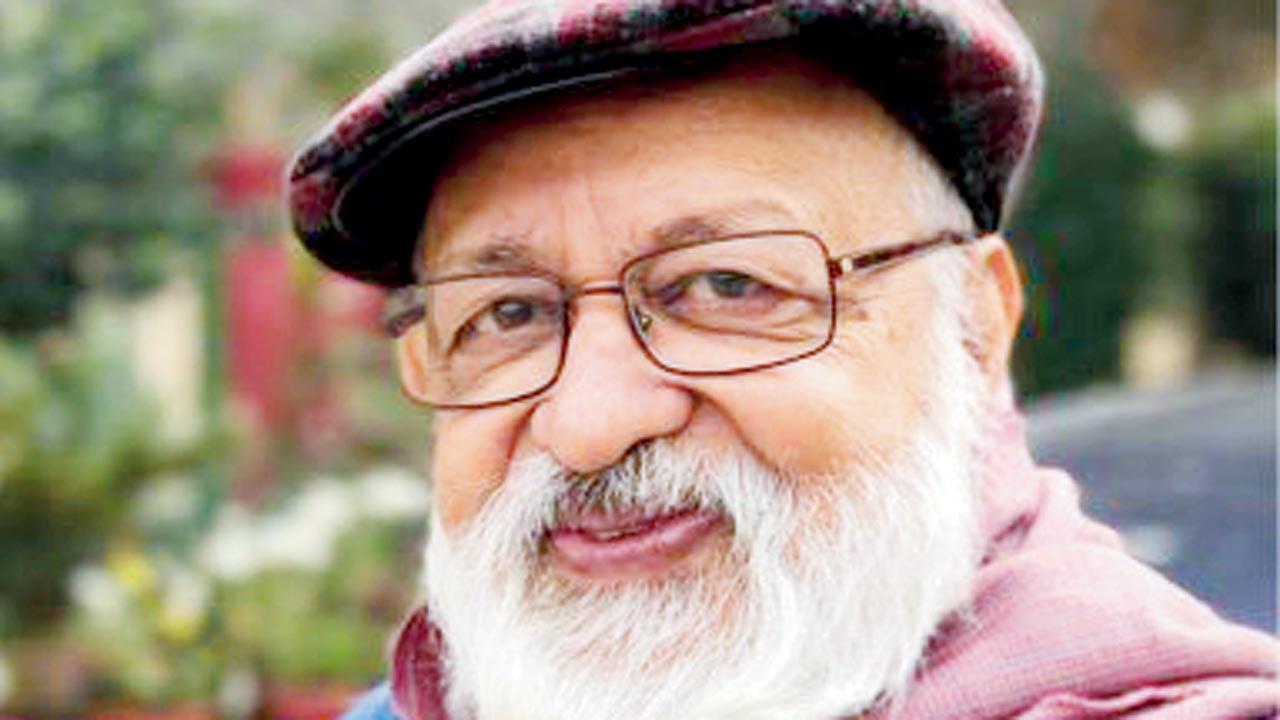
Professor Pushpesh Pant
Padma Shri Awardee, cultural historian with an interest in Hindu mythology
There cannot be one ideal way to depict Raavan. From where I hail in Uttarakhand, he looks like a Pahadi. This could be different from Varanasi’s Ganga-Jamuni Doab Raavan. Imagery and iconography of the king varies across regions. There are thousands of versions of the Ramayana across Southeast Asia. In India itself, there are dozens of versions including the Tamil Kamam Ramayana and the various versions in Sanskrit, but unfortunately we suffer from a homogenizing syndrome; some of us take only Tulsidas’s version as the one to dictate how Raavan should look.
Raavan was the son of Rishi Vishrava, who was the son of Rishi Pulastya, and was a tall and fair Brahmin. In no scripture I know of is he shown as dark, ugly or dwarf-like. In Java, where the Ramayana is performed as shadow puppet theatre, Raavan is not a demon but a king.
The janeyu is not an essential religious mark for all Hindus. Even if he did wear one, you can’t show it on armour, which is the main attire for a warrior on battlefield. And a film cannot be the benchmark for the standard image of Raavan.
When Saif Ali Khan plays Langda Tyagi on screen, it’s “perfect-casting”, but he plays Raavan and that sparks controversy. Actors play various roles across their life and we cannot make it about religion. Raavan is not a deity. How can religious sentiments be hurt by different interpretations of mythology?
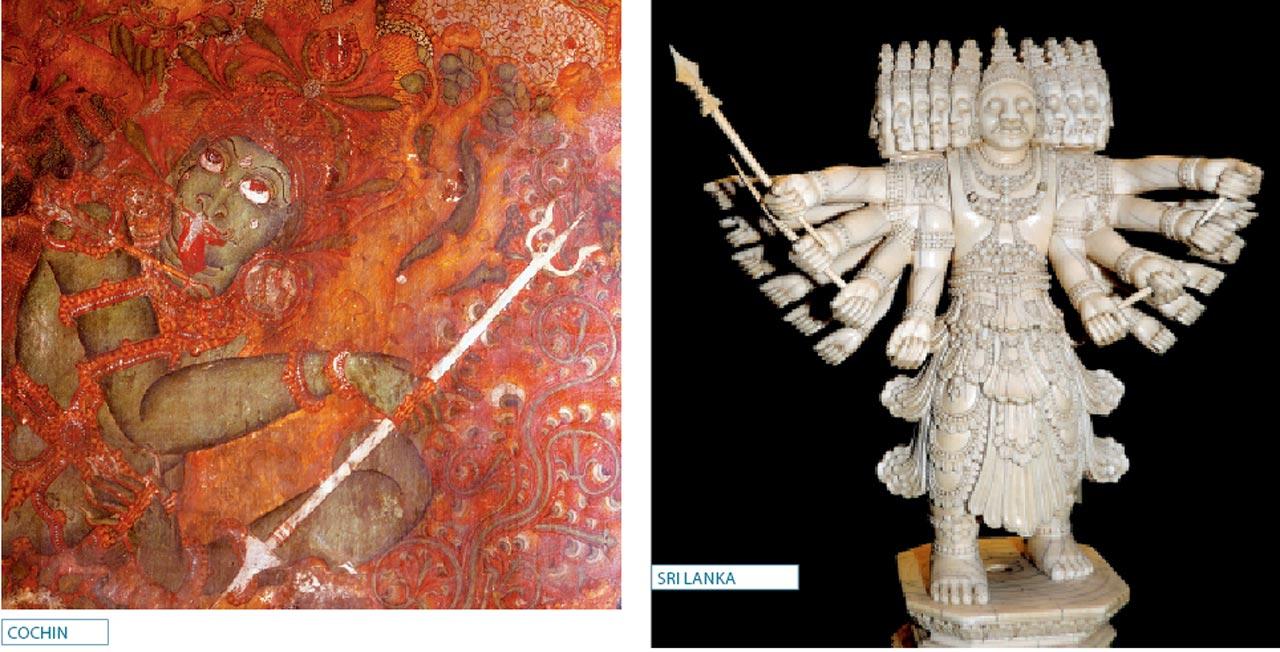 Cochin: A scene from a wall painting dating back to 17th century in the Rajah’s Palace, Cochin. The central figure could be Raavan; Sri Lanka: A carving of Raavan from 18th Century Sri Lanka
Cochin: A scene from a wall painting dating back to 17th century in the Rajah’s Palace, Cochin. The central figure could be Raavan; Sri Lanka: A carving of Raavan from 18th Century Sri Lanka
‘Artist painted according to school of painting’

Manjusha Gokhale
Sanskrit scholar, Dean of Faculty of Arts and Fine Arts at Tilak Maharashtra Vidyapeeth, Pune
If we go by the television show, Raavan comes across as a well-built man. Valmiki’s text makes a reference to this. But as far as the paintings go, there is no real proof. Paintings in India were made according to the school of style that the artist belonged to, whether say, the Madhubani or Mathura school. In Maharashtra, the accepted image of Raavan is that of what artist Raja Ravi Varma has drawn—well-built, dark with moustache and flowing hair, wearing a janeyu, carrying away Sita while fighting Jatayu and cutting off his wing.

Ganesh Shivaswamy
Advocate and founder of Ganesh Shivaswamy Foundation; author of yet unpublished work on Raja Ravi Varma’s representation of the Gods and how this shaped the common man’s perception about Hindu deities
Raja Ravi Varma painted around 24 works in the Ramayana series. Of these, Rama appears in 22, and Raavan in two. We must compare how Raavan and Rama look. Varma does multiple versions of Rama, his imagery is fluid—he is sometimes shown as fair, sometimes as dark, even blue. But Raavan is the same. His impression is based on Valmiki’s Ramayana. So, Ravi Varma’s Raavan is dark and well-built, like a man who exercises. Rama is like a young man, someone lithe but not with a sculpted body; imagine the body of someone who swims or does yoga. In both the paintings, Raavan is in control of what is going on around him—he has a strong body and mind. He is depicted as an imposing figure, much more than even Rama.
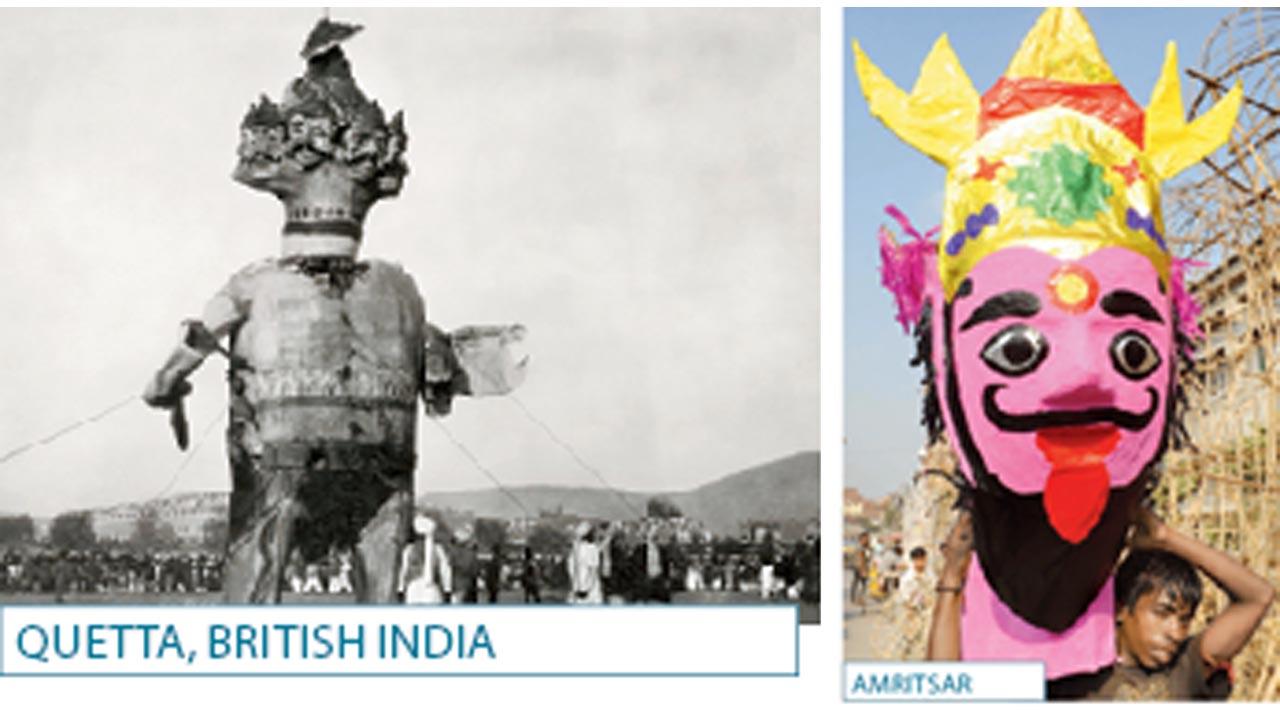 Quetta, British India: A sculpture of the many-headed Raavan on Dussehra in Quetta on the North West frontier of colonial India in the 1930s; Amritsar: A craft effigy of Raavan in Amritsar
Quetta, British India: A sculpture of the many-headed Raavan on Dussehra in Quetta on the North West frontier of colonial India in the 1930s; Amritsar: A craft effigy of Raavan in Amritsar
‘Raja Ravi Varma’s Raavan had a sculpted body’
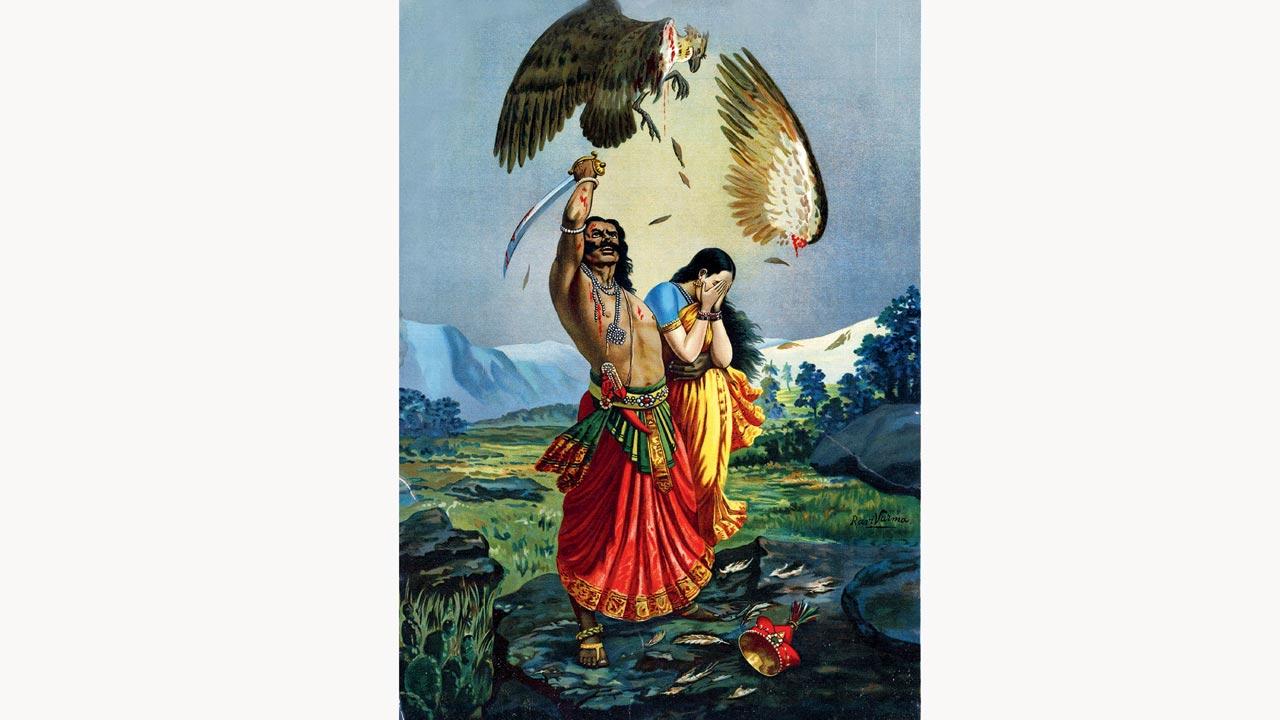
Jayatu Vadh—Chromolithograph of Raja Ravi Varma from the collection of Ganesh Shivaswamy, Bengaluru; Ravi Varma

Victory of Indrajit— Chromolithograph by Raja Ravi Varma from the collection of Aniruddha Haldipurkar, Karwar; Ravi Varma Press
 Subscribe today by clicking the link and stay updated with the latest news!" Click here!
Subscribe today by clicking the link and stay updated with the latest news!" Click here!







